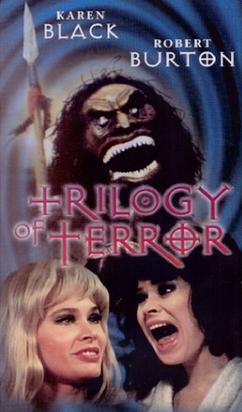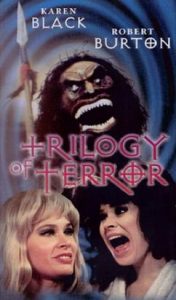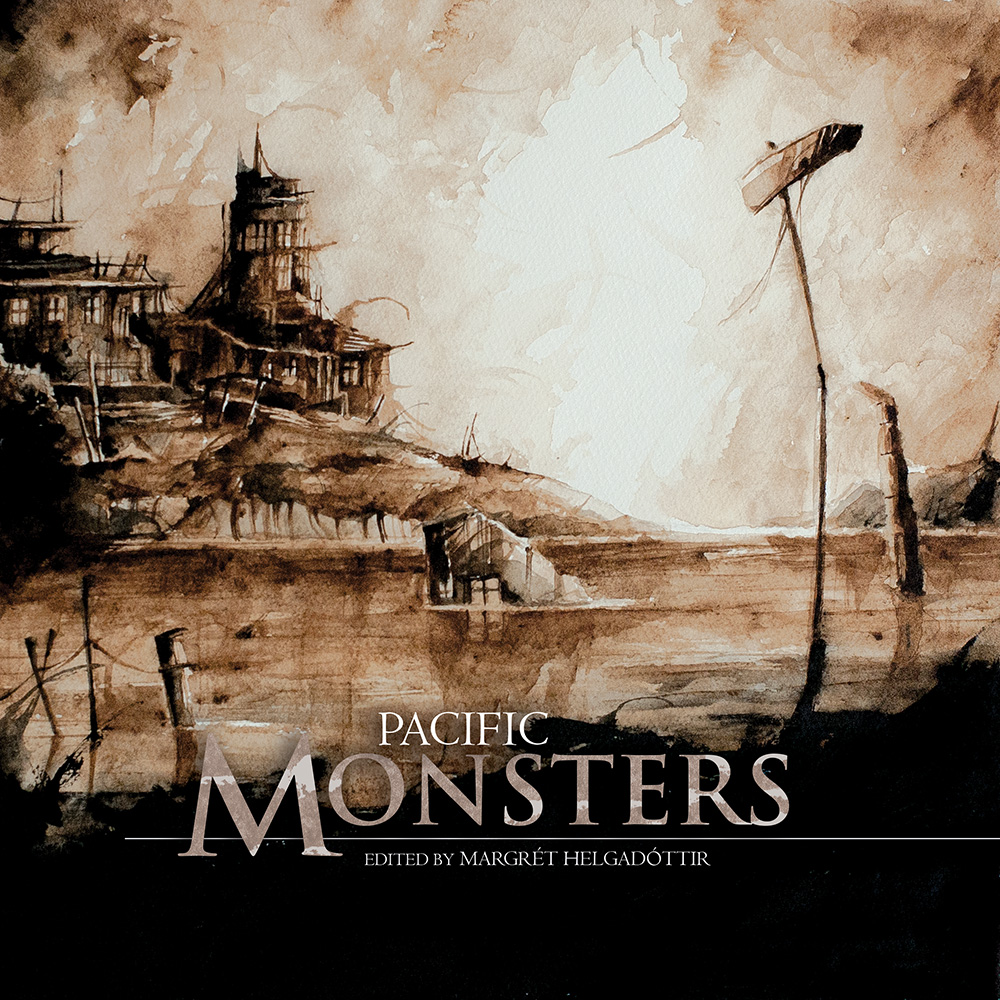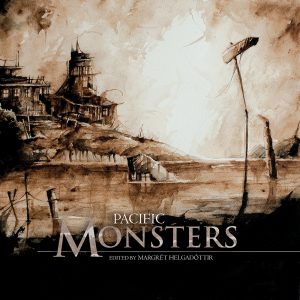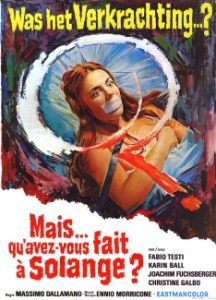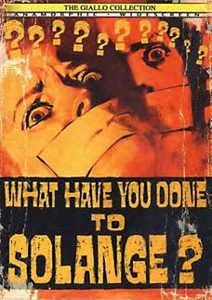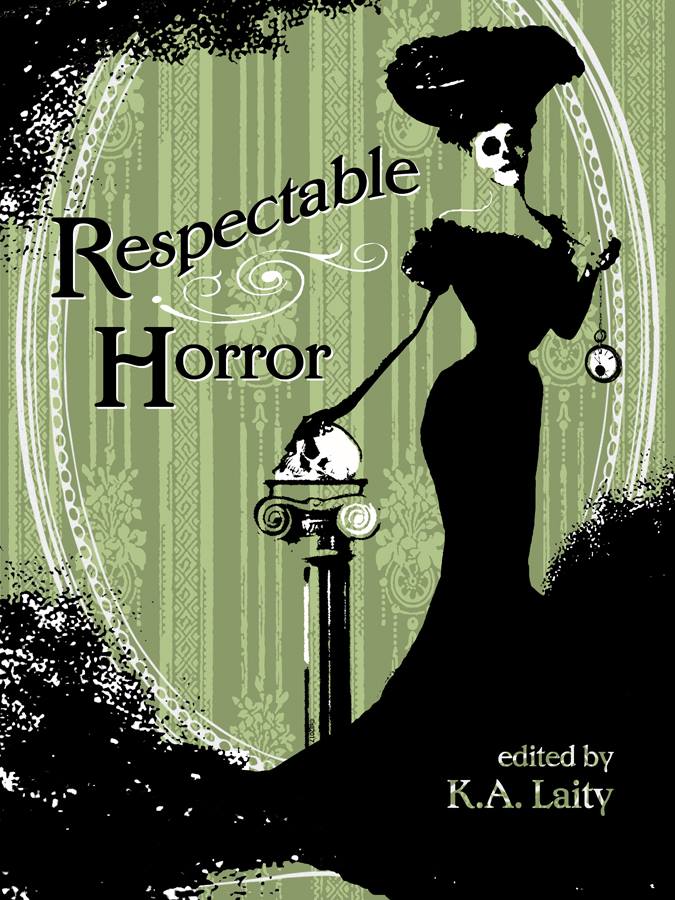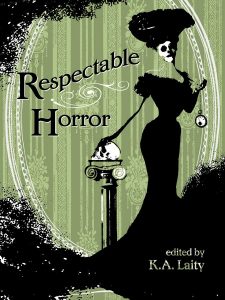Shadows of the Mind: Women in Horror Who Fight Back
by Sharon Shaw
[Contains spoilers for the films The Descent (2009), The Babadook (2014) and IT (2017)]
I’ve been experiencing a lot of “I can’t do this” over the last couple of weeks, and, counter-intuitive though it may sound, watching horror movies is sometimes the only thing that can cut through the treacle that my brain becomes when I’m experiencing a depressive episode.
Why counter-intuitive, you ponder? Well, I’m glad you asked.
Horror has something of a poor rep when it comes to the portrayal of women, particularly, and for a significant portion of the genre this is well-deserved. It’s not unique in this; the traditional action movie, with its male-power-fantasy framework, is frequently guilty of having women characters who are thin on the ground at best, and thin full stop when they do turn up. Their agency is often lacking, and far too often their presence is mainly in order to take the role of prize, to be awarded when Johnny Template achieves his goal at the end of the film. While I am no stranger to the practice of empathising and identifying with someone who is of a different gender, sexuality or culture (I think it’s a great habit that everyone should get into as early as possible), it can be a bit isolating when you can’t find characters who look and feel like you that behave in ways that are meaningful, reassuring and strengthening. It can be even more isolating when the society you’re trying to fit into expects a certain type of behaviour that doesn’t match yours, and there are few examples to tell them different.
And I do mean few examples, not none. The action story plays with anger, giving guidance on how we can push back against frustration, and it can be a power fantasy for women as much as for men (the early Alien and Terminator movies and Mad Max: Fury Road are some of my absolute favourites). But I don’t think “frustration” tells enough of the story, and it’s fascinating to me how those examples all contain strong elements of horror; not just playing with anger, but with fear.
Horror is (or should be) what we experience when we witness the subjugation of someone who is already physically weaker and more vulnerable. Repetitive, boring or downright bad horror does nothing to challenge the status quo; women start out as vulnerable and end up as dead or driven insane. Slasher flicks and torture movies that just replicate this pattern are the worst because they reinforce it and numb the audience to true horror, eliciting the “freeze” response, so they end up laughing instead. There’s no fighting this reaction; its intent is to keep you still long enough that the predator doesn’t see you, and all you can do is wait for it to pass. If the message is “can’t win, don’t try”, then the story is worse than useless. If, however, the characters are framed as victims initially but are able to come back from the brink, even when the process is flawed or incomplete, this has great lessons when we ourselves feel trapped by fear.
The Descent (2009) is, for the most part, a story about a group of women who face their challenge with planning, determination and an innate drive to fight, no matter what. It does end on the consequences of the freeze response, but like the Little Match Girl, where the protagonist succumbs to cold and exhaustion even as she holds the key to her salvation in her hands, reads to me as a cautionary tale against it.

The Babadook (2014) shows a complex fear of emotional responses, and how the refusal to process or even acknowledge them can manifest as deadly threat. Amelia’s monster is a complicated creation of dismissed trauma, unaddressed grief, repressed self-doubt and shame. Eventually it threatens her son, and while he is able to stand up to her, Sam is too small and frightened to tackle the demon; she is the one who must hold her ground against the Babadook.
Amelia models a core of self that still remains under all the terror, that stubbornly refuses to let the monster have full sway over her house, her child or her mind. The moment that breaks me and gives me wings every time is the expression on her face when she plants her feet and roars at her antagonist, “YOU ARE TRESPASSING IN MY HOUSE!”
By distinguishing throughout the film between his mother and the Babadook (when Sam yells at it to go away it’s always slightly to the side of Amelia) he gives her the key to its eventual defeat and us a clue as to how we can tackle our own unwelcome reactions – by personifying them slightly outside of ourselves we may enable a detached confrontation which gives us half a chance of success.
Amelia also provides the massive revelation that accepting the presence of such a huge and hideous beast in our basement, while we may not be able to outright destroy it – or even want to, if it is bundled up with the loss of things we loved and have no desire to forget – is a form of resilience. If we give it regular attention, nurture if necessary, and make sure our loved ones (at least the ones who cannot protect themselves) are kept safely away from it, then we need not fear that it will once again grow huge and stalk unopposed through our house.
IT (2017) presents a take on the impotence of existential fear in the face of someone who has known a different kind of immediate, life-threatening fear. While trauma can cause manifold problems of its own, the necessary steps to heal it have the potential to inoculate and protect in times of crisis.
While Bev is damselled slightly by her capture and role as motivation for the boys to reunite and take on Pennywise (a specific choice for the film adaptation), there is something powerful in his inability to kill her, and particularly in his frustration that he cannot even make her afraid of him. She has been targeted by the monster through symbols representing her own body – hair and blood – which are initially terrifying, but she is able to reconcile with them in part because of the support she receives from her friends. They acknowledge the gore in the bathroom that her father cannot see, they help her to clean it up, and as a result she knows they are stronger together than they will ever be apart – and it is Bev who feeds this back to them at their moment of separation, even recognising that this is exactly what Pennywise wants.
This is what gives fire to the inner voice that commands her to strike at the clown twice, and at her father when he finally turns on her openly. In the book it is hinted that It is behind Mr Marsh’s obscene and violent behaviour, but for me the strength here is that he is not – Bev has already experienced a child’s greatest terror; that of the parent who not only fails to protect you but is themselves a threat to your very life. She has faced, and fought, this emotional betrayal, and the void that lies behind Pennywise no longer holds any fear for her – let alone the hyperdontial clown.
Fear can easily be the dominant emotion for a woman. It’s not overwhelming for all of us, and obviously it can affect those who aren’t women just as much (what with it utilising those pesky brain chemicals we all share in some measure). But socially, statistically, women (including anyone whose gender wasn’t designated correctly at birth) experience more vulnerability than men. We are soaked in it throughout our lives; we are often expected to suck it up and get on with life despite it. The #metoo movement and how widespread it is makes that clear; behind each one of those stories is guilt, shame and trauma, all of which are rooted in fear.
And this is why I think a horror movie – a good horror movie – can serve as a great power fantasy for girls and women. When they’re done right they’re like a gut-wrenching fairy-tale, and while the “stay inside the circle” story serves its purpose for young children, sooner or later this must give way to “how to fight the beasts outside the circle
“. We cannot stay sheltered forever. If some form of trauma hasn’t already taken away that safe cushion of dependence, life will eventually. We need guidance on how to handle it when it happens, and how to recover from it afterwards, and if we find the right stories, we will have exactly that.
***
Bio:
Sharon Shaw is the co-host of The School of Movies podcast, where she and her husband Alex have spent several years reading (some might say way too) deeply into the films, and occasionally TV and video games, that make up the pop culture landscape. She is also the editor of Alex’s book series, The New Century Multiverse, and a voice actor in the audio drama productions of the same.
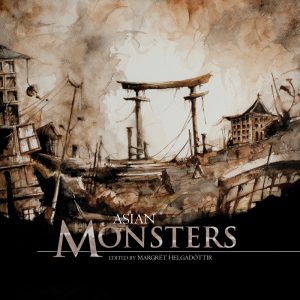

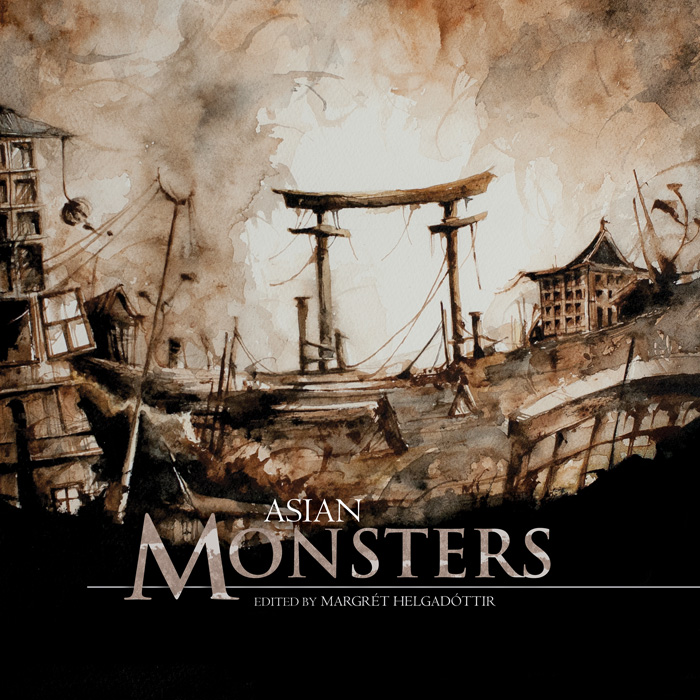
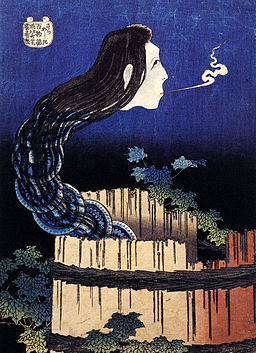
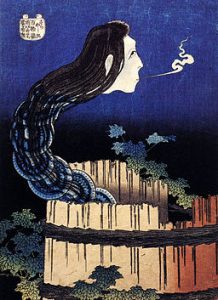 Forget the floating white sheets with unfinished business, who will disappear to rest peacefully once their task is complete. In Japan, there is a detailed classification system for different kinds of ghosts. The word yūrei is used as an umbrella term for the ghosts of deceased humans (in Japanese it is written as 幽霊, with the first symbol meaning ‘faint’ or ‘dark’ and the second meaning ‘soul’). There are many categories of yūrei. There are the shiryō; ghosts who haunt loved ones and sometimes attempt to take them to the land of the dead, kosodate-yūrei; ghosts of mothers who died in childbirth and return to care for their children, and jibakurei; spirits that are tied to a specific location.
Forget the floating white sheets with unfinished business, who will disappear to rest peacefully once their task is complete. In Japan, there is a detailed classification system for different kinds of ghosts. The word yūrei is used as an umbrella term for the ghosts of deceased humans (in Japanese it is written as 幽霊, with the first symbol meaning ‘faint’ or ‘dark’ and the second meaning ‘soul’). There are many categories of yūrei. There are the shiryō; ghosts who haunt loved ones and sometimes attempt to take them to the land of the dead, kosodate-yūrei; ghosts of mothers who died in childbirth and return to care for their children, and jibakurei; spirits that are tied to a specific location.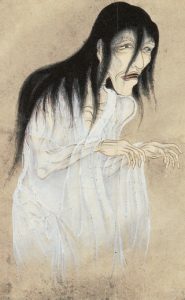 Okiku’s untimely, violent death caused her spirit eternal torment, and spread fear to those she once loved. But there is another category of yūrei which present their feelings in much more harmful ways. When people die with strong emotions, such as rage, jealousy, or hatred, their spirits remain connected to the human world, enacting vengeance on anyone or anything which crosses their path. They behave more like forces of nature than ghosts, being powerful enough to inflict illness and death and even cause natural disasters. Of all the types of yūrei, these are the ones which no-one ever wants to encounter. These are the onryō. Aside from their abhorrent deeds, what makes onryō so terrifying is that they can seldom be reasoned with or banished. Unlike other yūrei, their desire for vengeance is insatiable.
Okiku’s untimely, violent death caused her spirit eternal torment, and spread fear to those she once loved. But there is another category of yūrei which present their feelings in much more harmful ways. When people die with strong emotions, such as rage, jealousy, or hatred, their spirits remain connected to the human world, enacting vengeance on anyone or anything which crosses their path. They behave more like forces of nature than ghosts, being powerful enough to inflict illness and death and even cause natural disasters. Of all the types of yūrei, these are the ones which no-one ever wants to encounter. These are the onryō. Aside from their abhorrent deeds, what makes onryō so terrifying is that they can seldom be reasoned with or banished. Unlike other yūrei, their desire for vengeance is insatiable.